What Does Earl Grey Tea Taste Like
Earl Grey tea is a distinctive blend, famous for its bold, citrus-infused flavor. It originates from black tea leaves flavored with oil from the rind of the bergamot orange, a fruit mostly found in the Mediterranean. You’ll recognize Earl Grey by its unique taste: the bergamot oil provides a floral and lemony quality that sets it apart from other black teas.
The taste-profile of Earl Grey tea can be broken down as follows:
- Aroma: A pungent citrus fragrance.
- Flavor: A balance of rich black tea with bright citrus notes.
- Body: Generally possesses a medium body, though this can vary with the tea base used.
When you steep your Earl Grey, the brewing time can affect the intensity of both the tea and the citrus flavor. A shorter steeping time will result in a lighter, more delicate tea. A longer steeping time yields a stronger, more robust flavor.
Bestsellers
There are variations of Earl Grey tea, each offering a slightly different profile:
- Traditional Earl Grey: Black tea with bergamot oil.
- Lady Grey: Often contains additional citrus peel and has a softer bergamot flavor.
- French Earl Grey: May include rose petals or other floral notes alongside bergamot.
Your choice of Earl Grey can be enjoyed plain, but you may also add milk, lemon, or sweeteners to taste. Remember, the strength of the bergamot flavor is a personal preference, and modifying these additives can help tailor the experience to your liking.
Primary Flavor Profile
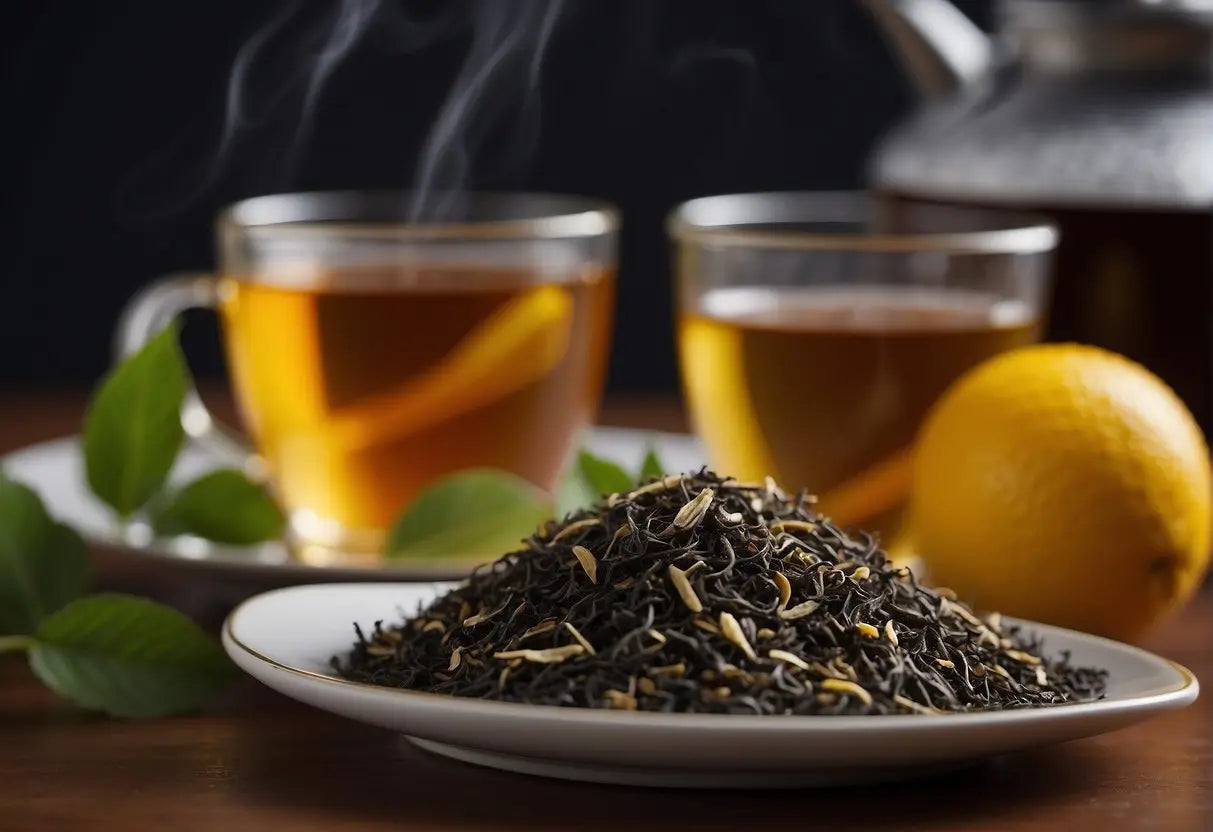
When you sip Earl Grey tea, your palate is greeted by a distinct combination of a citrusy essence and a robust tea foundation.
Bergamot Essence
The keynote flavor that defines Earl Grey tea is bergamot, a fragrant citrus fruit. The oil extracted from the rind of the bergamot orange imparts a unique, tangy flavor that is slightly floral and intensely aromatic. It's this characteristic taste that sets Earl Grey apart from other black tea blends.
Black Tea Base
Typically, Earl Grey is made using a black tea base which contributes a bold, full-bodied flavor. Depending on the specific black teas used—usually a mix of Assam, Ceylon, and/or other varieties—you'll experience notes ranging from malty to fruity to slightly astringent. This base ensures the brew carries depth and complexity beneath the bright top notes of bergamot.
Aroma Characteristics
When you first encounter Earl Grey tea, the distinctive fragrance is marked by its vibrant and citrusy top notes. The aroma arises from the essential oil of bergamot, a Mediterranean citrus fruit, which is the signature scent of this tea blend.
Key Aromatic Notes:
- Bergamot: A fresh, tart, and slightly floral scent
- Black tea: A warm, malty base that anchors the citrus notes
The Breakdown:
- Citrusy Overtones: Bergamot oil provides a sharp citrus note, subtly sweet and intensely aromatic.
- Floral Hints: There may be a light floral quality, reminiscent of lavender or rose.
- Deep Tea Foundation: A robust background of black tea enriches the aroma with earthy and woodsy elements.
Interaction of Scents:
- The combination yields a balanced bouquet; the bold aroma of black tea harmoniously complements the bright bergamot.
- For earl grey connoisseurs, you might discern a hint of spice or a touch of creaminess, depending on the tea blend.
Note for First-Time Drinkers: Be prepared for a potent initial scent. It’s advisable to inhale gently to appreciate the interplay between the lively bergamot and the soothing tea aromas.
Variations and Blends
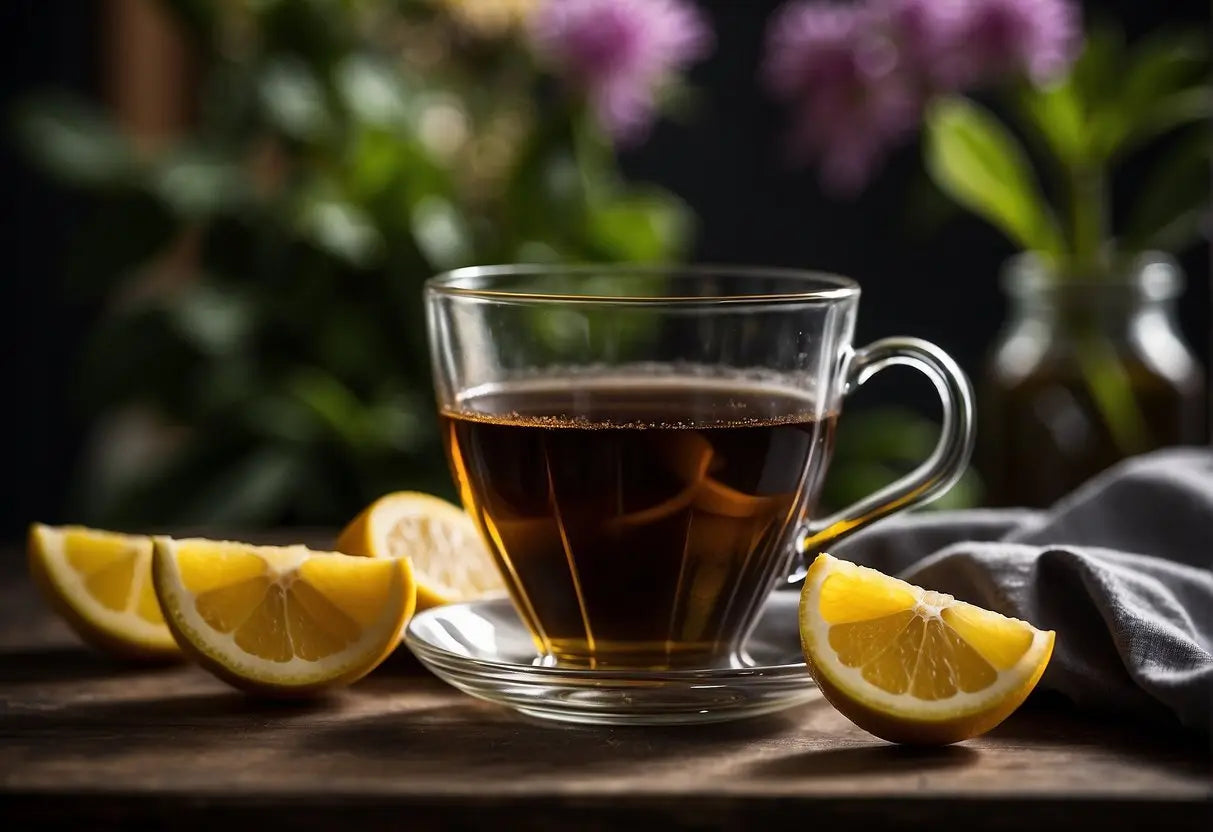
Earl Grey tea has several popular variations, each with its own distinctive characteristics. The base of bergamot flavor remains, but additional ingredients create a unique taste experience.
Lao Ban Zhang
Lady Grey
Lady Grey is a milder version of Earl Grey, infused with additional citrus flavors. It typically includes:
- Orange peel: offers a sweeter, softer citrus note.
- Lemon peel: enhances the tea with a bright, zesty taste.
French Earl Grey
French Earl Grey has a more floral and aromatic twist, usually complementing the bergamot with:
- Lavender: provides a soothing, floral aroma.
- Rose petals: add a sweet and elegant floral note.
Russian Earl Grey
Russian Earl Grey is known for its more intense profile, often achieved by adding:
- Lemongrass: contributes a fresh, lemony flavor with a hint of ginger.
- Cornflower petals: introduces a subtle, peppery taste.
Decaffeinated Earl Grey
Decaffeinated Earl Grey delivers the classic flavor without the caffeine, ensuring you can enjoy it any time of day. Its preparation includes:
- Removing caffeine while preserving the bergamot essence.
- Maintaining the rich flavor through a natural decaffeination process.
Caffeine Content
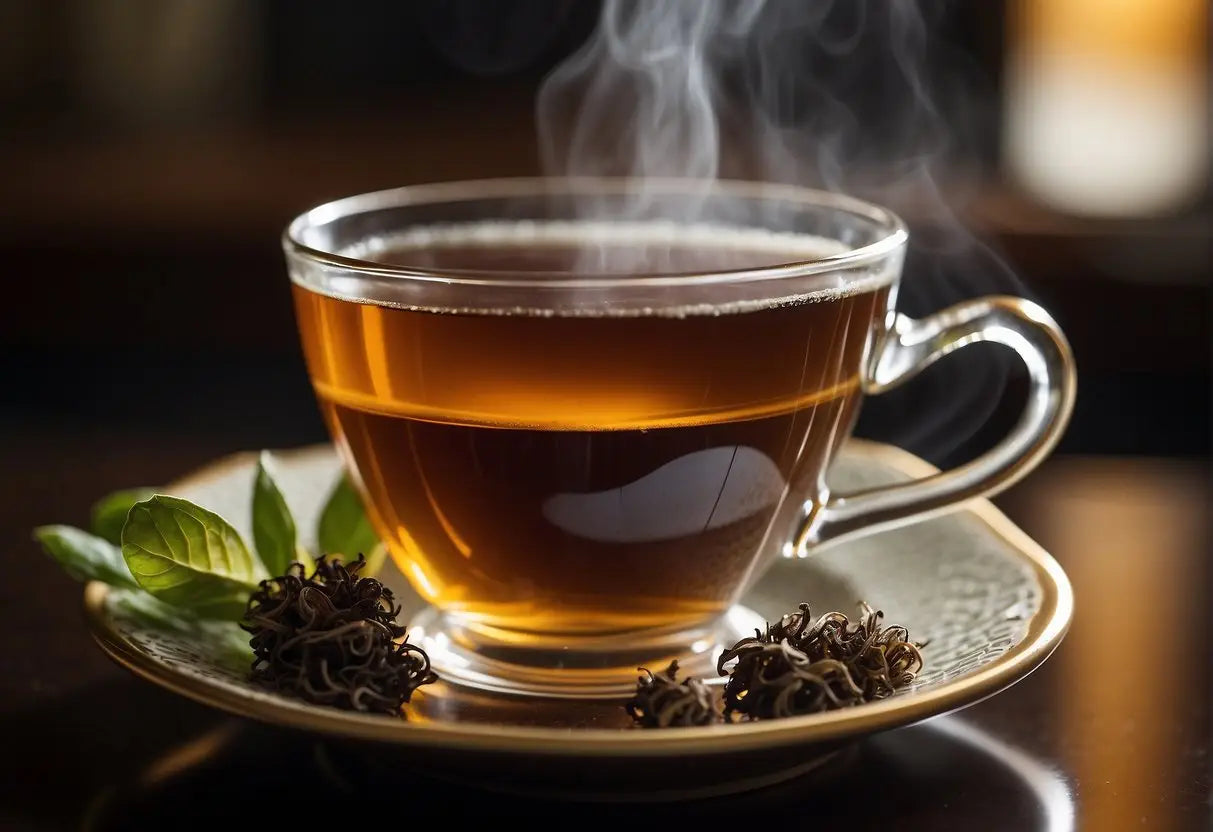
Earl Grey tea, a black tea blend flavored with oil from the rind of bergamot oranges, typically contains 40-120 milligrams of caffeine per eight-ounce serving. However, this range may vary based on brewing time and the amount of tea used.
Factors Influencing Caffeine Levels:
-
Brewing Time: The longer you brew your Earl Grey, the more caffeine will be extracted. A quick steep of 1-2 minutes can greatly reduce the caffeine content.
-
Tea Leaves Amount: Using more tea leaves can increase the caffeine in your cup. A standard measure is one teaspoon per cup.
Comparison With Other Beverages:
-
Coffee: Generally has significantly more caffeine, approximately 95-200 milligrams per eight-ounce serving.
-
Green Tea: Contains a lower caffeine content, ranging from 20-45 milligrams.
-
Herbal Tea: Most are naturally caffeine-free, except for those containing tea leaves.
To moderate your intake, you may consider the following:
- Opt for a shorter brewing time.
- Use less tea.
- Try decaffeinated Earl Grey versions.
Remember, individual sensitivity to caffeine varies, so adjust your consumption according to your personal tolerance.
Health Benefits
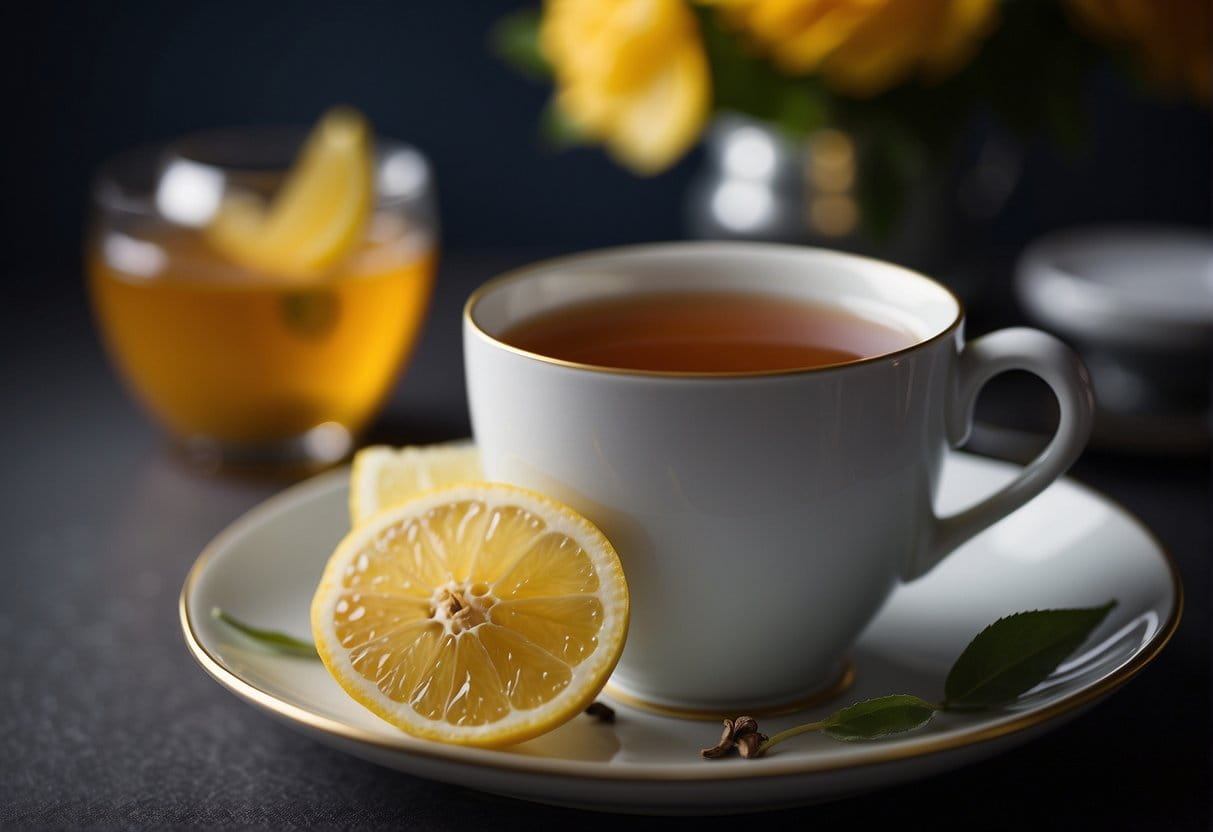
When you enjoy a cup of Earl Grey tea, you are indulging in more than just a flavorful experience. This tea offers a range of health benefits attributed to its ingredients, particularly the presence of bergamot oil.
Antioxidants: Earl Grey tea is high in catechins and flavonoids, antioxidants that combat free-radical damage. Your cells are protected, potentially lowering your risk of chronic diseases.
Dental Health: The tea contains fluoride which is beneficial for your dental health. By regularly drinking Earl Grey, you aid in the prevention of tooth decay and the promotion of oral wellbeing.
Digestive Aid: If you suffer from digestive issues, the tea can act as a mild digestive aid. This can help alleviate issues such as nausea, indigestion, and bloating.
Energy Boost: The caffeine content in Earl Grey tea can provide you with a gentle lift of energy without the jitters often associated with coffee.
Stress Relief: Bergamot has natural aromatherapy qualities that can help you relax and reduce anxiety. A cup of Earl Grey may help soothe your nerves and relieve stress.
Remember to drink Earl Grey tea in moderation as part of a balanced diet to best enjoy these benefits.
Brewing Techniques
Brewing Earl Grey tea properly is crucial for extracting the best flavor. Paying attention to steeping time and water temperature can greatly enhance your tea experience.
Steeping Time
- Shorter Steeping (1-3 minutes): Yields a lighter taste, less caffeine, and lower bitterness.
- Longer Steeping (4-5 minutes): Enhances depth of flavor, increases caffeine, and may introduce bitterness.
Water Temperature
- Hotter Water (~208°F): Best for a robust and bold Earl Grey flavor; risks bitterness if steeped too long.
- Cooler Water (~190°F): Results in a smoother and more subtle flavor, reducing the possibility of bitterness.
Pairing with Foods
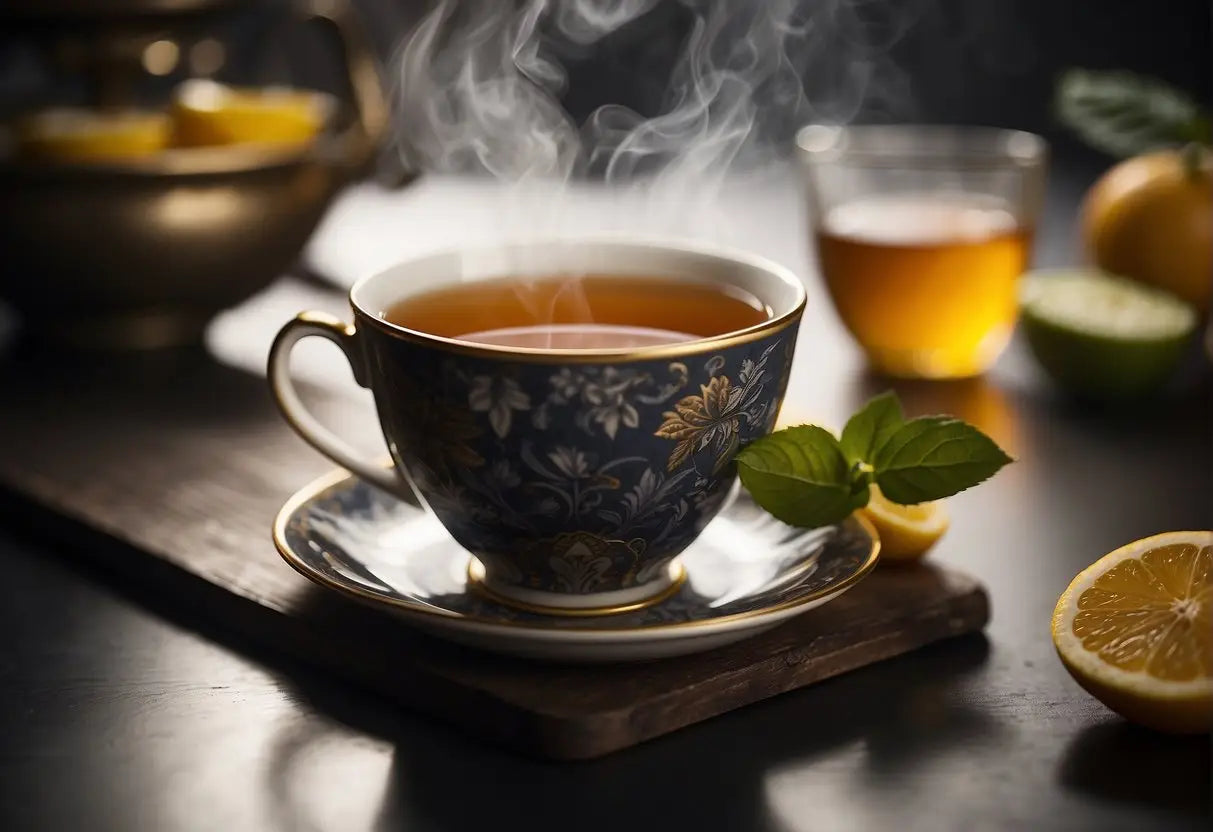
When you enjoy Earl Grey tea, certain foods can complement its distinct citrusy flavor. Here are some ideal pairings:
Sweet Treats:
- Scones: Earl Grey tea pairs splendidly with scones, especially when they're served with clotted cream and jam.
- Lemon drizzle cake: The tartness of the lemon echoes the bergamot orange flavors in the tea.
- Madeleines: These delicate French cakes are a light, sweet complement.
Savory Options:
- Quiche: The buttery and savory notes of a quiche balance the bright zing of Earl Grey.
- Cucumber sandwiches: A classic pairing with an afternoon tea; the freshness works well with the tea's flavor.
Cheeses:
- Cream cheese: Whether on a bagel or with crackers, its mildness lets the Earl Grey's flavor shine.
- Goat cheese: Its tanginess pairs nicely with the bergamot's citrus notes.
| Meals | Suggestions |
|---|---|
| Breakfast | Oatmeal with citrus or berry toppings, yogurt parfait |
| Lunch | Waldorf salad, turkey club sandwich |
| Dinner | Grilled salmon, roasted duck with a citrus glaze |
While enjoying Earl Grey tea, avoid overly spicy food as it can overpower the tea's delicate flavor profile. Instead, opt for lightly seasoned dishes that can enhance your tea experience. Remember, the ideal pairing is one that pleases your palate and complements the tea without overwhelming it.
Cultural Significance
Earl Grey tea holds a distinct place in tea cultures around the world. Its origins are commonly linked to Charles Grey, the 2nd Earl Grey and British Prime Minister in the 1830s, although these accounts are often considered more legendary than factual.
In the United Kingdom, your experience with tea culture might often include Earl Grey, as it's become a staple in British afternoon teas. Its distinctive flavor, characterized by the citrus aroma of bergamot oil, separates it from other black teas and has garnered a dedicated following.
Across the pond in North America, Earl Grey has also cemented its status. It's a popular choice for both hot tea drinkers and iced tea enthusiasts, a testament to its versatility and wide appeal.
- Canada even has its own twist on Earl Grey with the addition of vanilla, named "London Fog," further demonstrating its cultural adaptability.
In contrast, in Italy, Earl Grey has influenced the cocktail scene with the "Earl Grey Martini," a sophisticated blend that heightens the tea's bergamot profile with a kick of gin.
- Tea Ceremonies: Unlike other teas, Earl Grey doesn't typically feature in traditional tea ceremonies. However, its recognition as a tea for relaxation or a social beverage remains strong.
To your palate, the experience of Earl Grey extends beyond its taste to its cultural connotations of elegance, refinement, and a touch of historical mystique. Whether sipped quietly at home or as part of a lively afternoon tea gathering, Earl Grey tea resonates with timeless tradition and global appeal.
← Older post Newer post →











